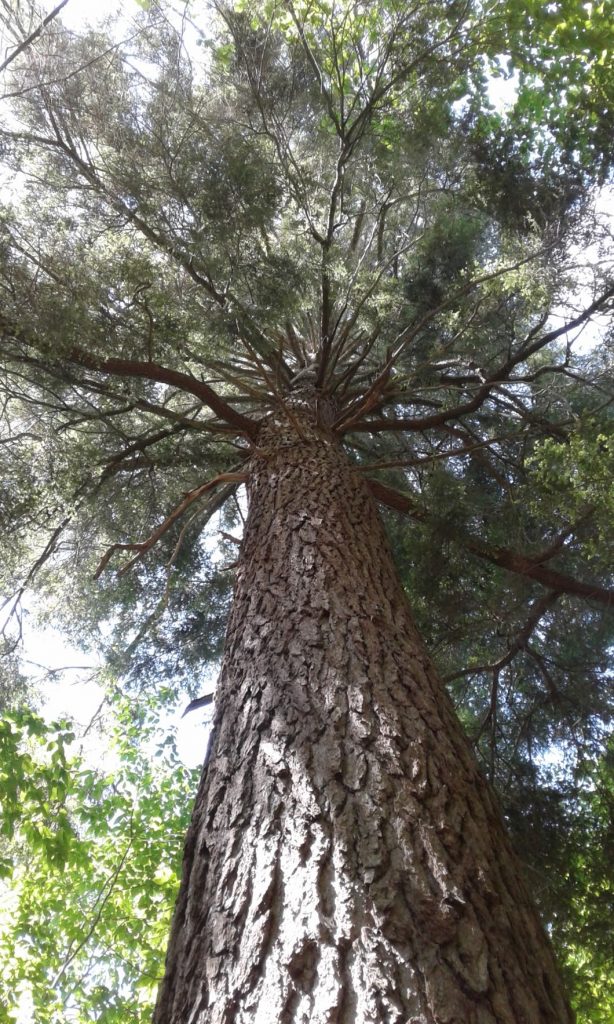Get ready for another summer of fun. That’s right. They’ve passed their test and now Veg crews are in the house (or forest) again.
Danielle may be busy pouring over data in the lab but that doesn’t mean the research or the field adventures are over. The veg crews will be taking us along for the ride.
Here’s the first taste of their summer:
The north vegetation crew successfully completed their first week of data collection in the Susquehannock State Forest. Together the crew finished two treatment plots and four priority plots.
Treatment plots have herbicide applied by DCNR crews and are generally comprised of less diverse plant communities but contain 15 plots and cover a far larger area than normal vegetation plots. Inside one treatment area located in the northern Susquehannock a beautiful 35.5in DBH Tsuga canadensis was found.
Sadly, the invasive hemlock wooly adelgid is defoliating these beautiful native trees which ultimately leads to death.

Priority plots were extremely variable with some locations existing on steep wet slopes which were inhabited by diverse plant communities whereas other plots were located within DCNR treatment areas and sometimes consist of down trees

Within our study areas older shelter wood stands, which have grown into thick pole stands, are comprised of very thick tree regeneration and often test the patience of an entire crew.

Jake Halabut (Michigan Tech grad student), Ryan Hughes (recent Carthage undergrad) and Chelsea Gendreau (SUNY Cobleskill undergrad) are kneeling staggered at 12ft intervals. Jake is only kneeling about 15 feet from myself.
While collecting data in the northern Susquehannock, we spotted a four leaved trillium. This individual had not flowered this year but grew an extra leaflet.

Bird nests have been spotted by Wildlife Management major Chelsea Gendreau at two locations within our northern and southern study areas. One nest, belonging to dark-eye junco’s, contained several hatchlings and was found within a deer exclosure perfectly sheltered by lycopodium species along with leaf litter.

Another nest was found at the bottom of a wild currant shrub and only contained eggs which were being watched closely by a mother veery.

While our job is to collect vegetation data, one must enjoy the full scope of mother nature. As a wildlife management undergraduate and sharing a strong interest with the southern crew leader of reptile and amphibians, I spend some time at plots flipping rocks, bark, and keeping my eyes peeled while navigating state forest roads looking for wildlife.
As week one comes to a close, we were lucky to see a fair amount of slimy salamanders on steep rocky slopes.

Northern two-lined, red/lead back, spring, dusky species, red eft, and a Jefferson salamander were found while visiting plots along with a milk snake which was found while leaving our first treatment plot. Judging by the blue color in this individuals eyes and its overall pale appearance, I’d imagine this snake is about to shed its skin and soon exhibit a more vibrant look.

I will close this blog post with one of Pennsylvania’s most beautiful animals, the wood turtle.

Calling wooded floodplains, streams, and rivers home, this species can take well over 12 years to become sexually mature. Our crew has already seen one female in route to lay a clutch of eggs but was permanently stopped when she crossed a road. These slow growing, long lived, and absolutely gorgeous prehistoric beasts are personally among the most pleasing to find within their natural habitat.
Northern Veg Crew
If you would like to receive email alerts of new blog posts, subscribe here.
And Follow us on Twitter @WTDresearch
